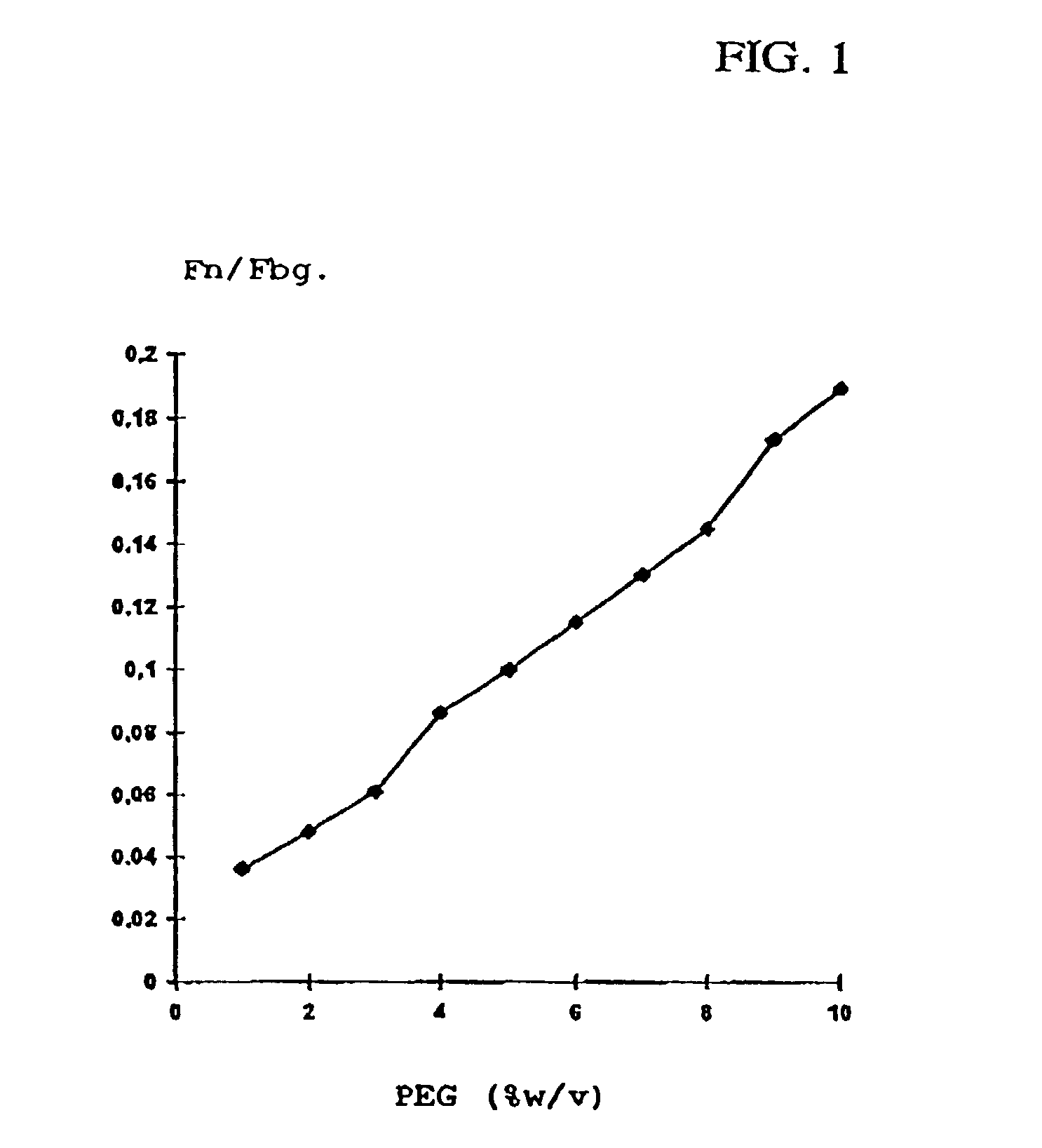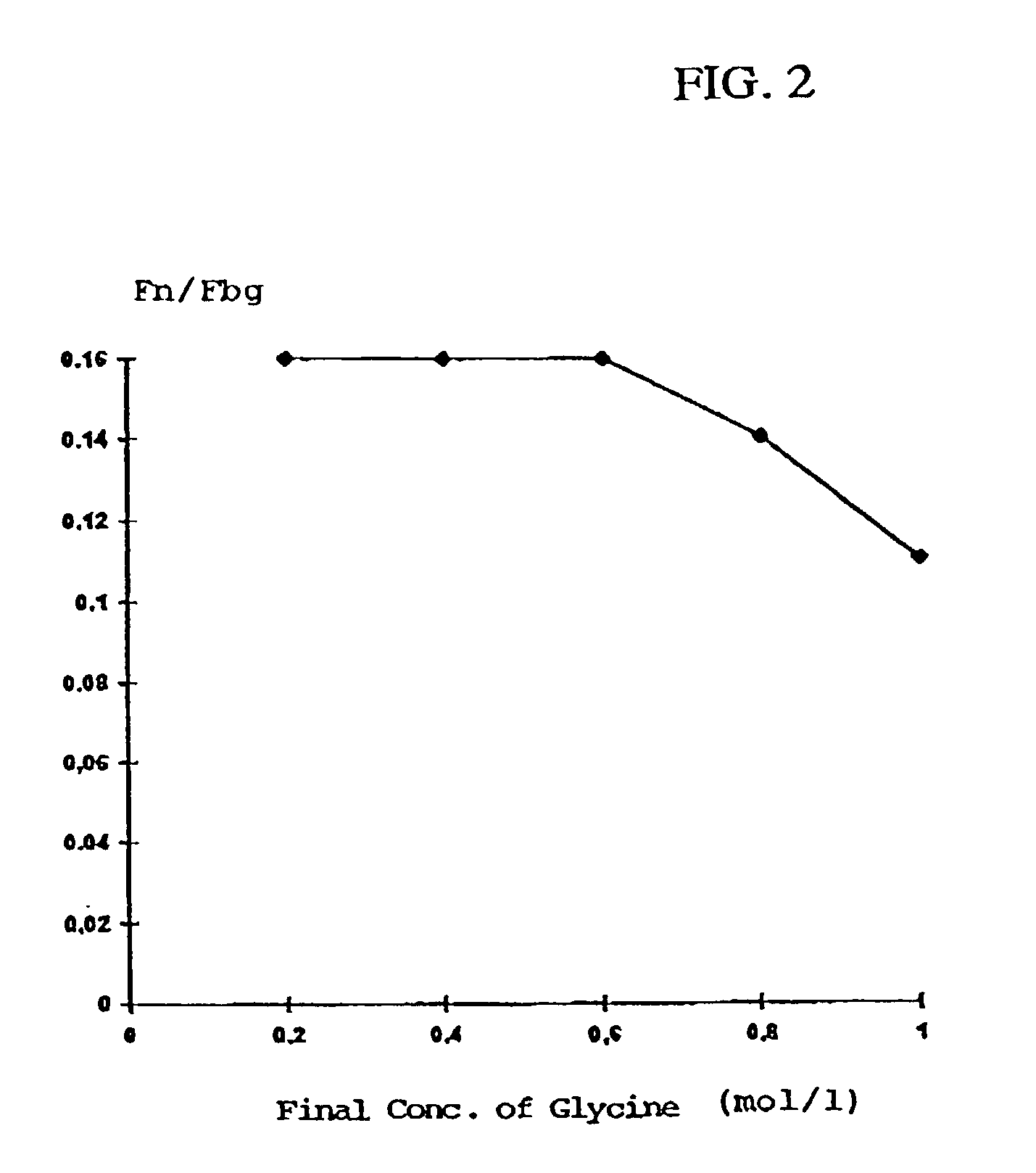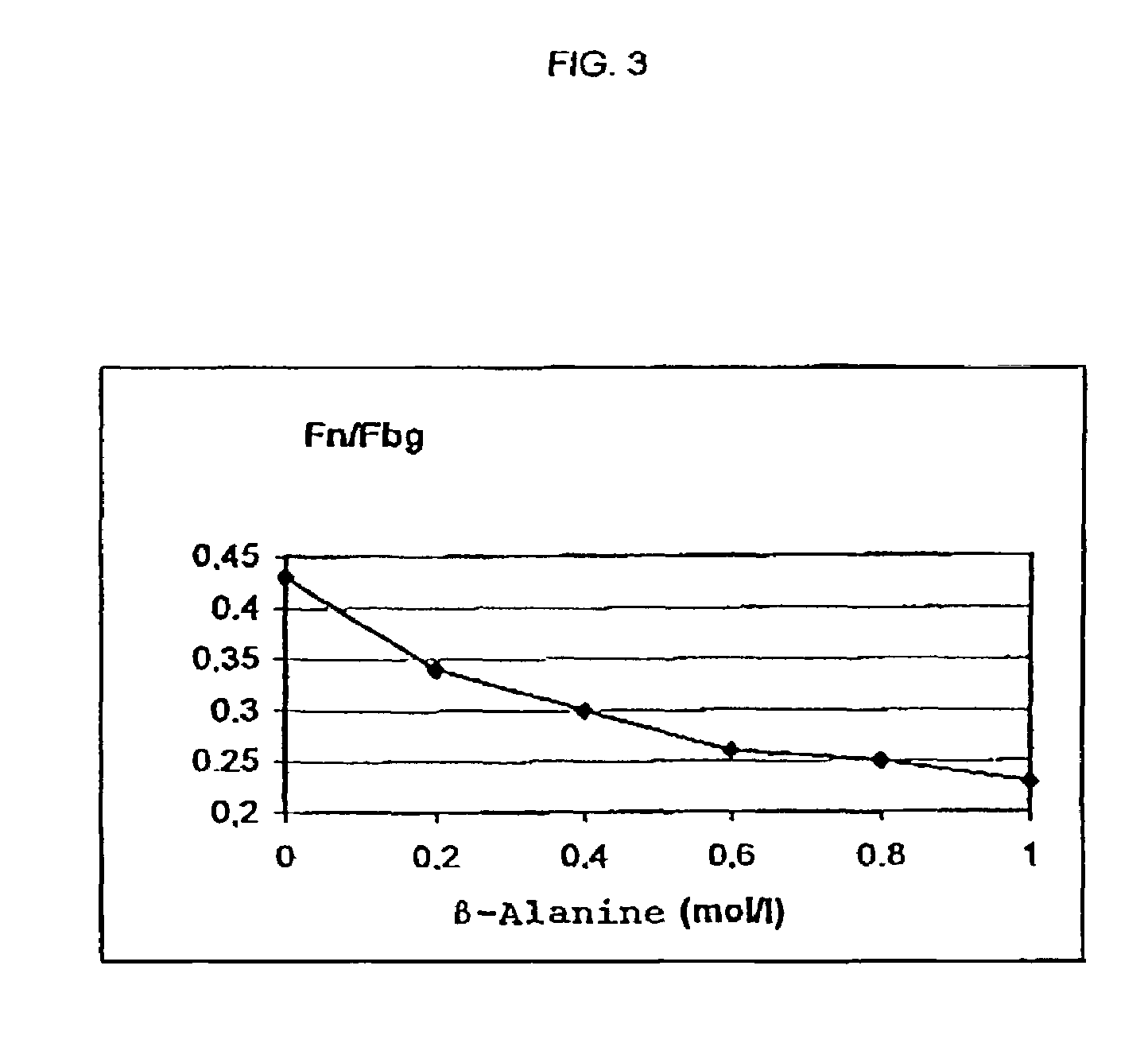Method for producing a preparation based on fibrinogen and fibronectin as well as protein compositions obtainable according to this method
a technology of fibrinogen and fibronectin, which is applied in the field of producing a preparation based on fibrinogen and fibronectin as well as protein compositions obtainable according to this method, can solve the problems of high density, adhesive) cannot be guaranteed, concentrated ready-to-use fibrinogen or fibrin adhesive solutions, respectively, and involving some difficulties. virus contamination can be almost excluded, and promote wound healing
- Summary
- Abstract
- Description
- Claims
- Application Information
AI Technical Summary
Benefits of technology
Problems solved by technology
Method used
Image
Examples
example 2
[0094]Human plasma cryoprecipitate was dissolved analogous to Example 1, the pH was adjusted to 7.3, and it was filtered to clarification. Aliquots of this solution were admixed analogous to Example 1 with solutions containing glycine and PEG 4000, so that in each case a final PEG concentration of 6.5% (w / v), yet various glycine concentrations ranging from 0.2 to 1 M were obtained. The precipitates formed were centrifuged off analogous to Example 1 and analyzed.
[0095]In all variants, the protein yield was approximately 95%. The ratio fibronectin:fibrinogen in dependence on the glycine concentration has been summarized in Table 2 and is additionally graphically represented in FIG. 2.
[0096]
TABLE 2Dependence of the protein composition of the precipitate onthe glycine content in the precipitation mixture(PEG concentration: 6.5% w / v).GlycineFibronectin:mol / lFibrinogen0.20.160.40.160.60.160.80.141.00.11
Supplementing Example 1, this Example illustrates that protein precipitating agents kno...
example 3
[0098]A plasma cryoprecipitate was dissolved as in Example 1. While stirring at room temperature glycine was added up to a final concentration of 2 mol / l. The protein precipitate formed was centrifuged off and analyzed as in Example 1. Fibrinogen was almost completely precipitated. The relative content of fibrinogen amounted to 86% of the total protein, the relative content of fibronectin was 1.5%. The ratio fibronectin:fibrinogen thus was 0.017.
example 4
[0099]A plasma cryoprecipitate was dissolved as in Example 1. While stirring at room temperature, PEG 4000 was added up to a final concentration of 10% (w / v). The protein precipitate formed was centrifuged off and analyzed as in Example 1. Fibrinogen was almost completely precipitated. The relative content of fibrinogen amounted to 72% of the total protein, the relative content of fibronectin was 16%. The ratio fibronectin:fibrinogen thus was 0.22.
PUM
| Property | Measurement | Unit |
|---|---|---|
| Temperature | aaaaa | aaaaa |
| Molar density | aaaaa | aaaaa |
| Density | aaaaa | aaaaa |
Abstract
Description
Claims
Application Information
 Login to View More
Login to View More - R&D
- Intellectual Property
- Life Sciences
- Materials
- Tech Scout
- Unparalleled Data Quality
- Higher Quality Content
- 60% Fewer Hallucinations
Browse by: Latest US Patents, China's latest patents, Technical Efficacy Thesaurus, Application Domain, Technology Topic, Popular Technical Reports.
© 2025 PatSnap. All rights reserved.Legal|Privacy policy|Modern Slavery Act Transparency Statement|Sitemap|About US| Contact US: help@patsnap.com



